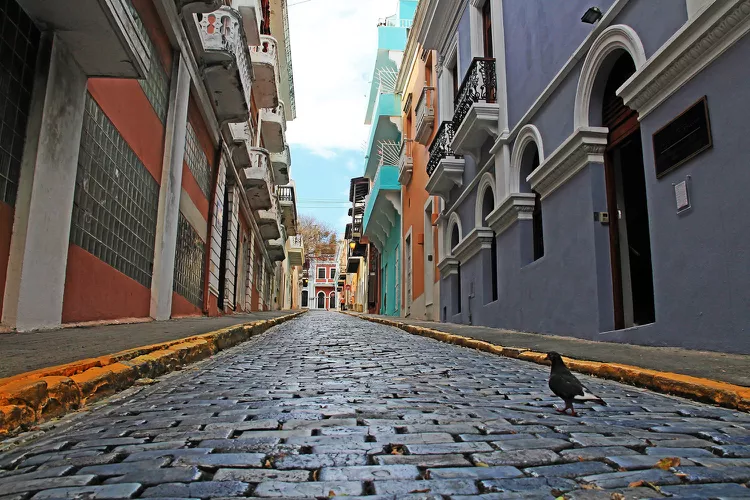SAN JUAN — A settlement between creditors in Puerto Rico’s bankruptcy case lifted prices of the commonwealth’s municipal bonds and shares of insurance companies that guaranteed payments on the bonds.
Traders have driven up prices of the island’s benchmark $3.5 billion general obligation bond due 2035 by 3.3% to around 78 cents on the dollar after the Tuesday deal removed one of the last logjams in Puerto Rico’s nearly four-year journey through bankruptcy court.
Roughly $400 million face amount of the bond changed hands Tuesday and Wednesday, making it one of the most actively traded securities in the municipal-bond market, according to data from Electronic Municipal Market Access.
Two critical documents related to Puerto Rico’s $3.5 billion general obligation bond offering have been released:

A draft of the preliminary official statement (POS) for the general obligation bond underwriting and a special liquidity update from the Government Development Bank (GDB).
Both documents contain new financial information and a laundry list of risks for potential bondholders. Citi has published a special focus report on the upcoming GO bond offering. Raise the starting gun; the race will begin soon.
As required by law, financial disclosures cast a harsh light on the condition of the issuer. The two documents issued by Puerto Rico look as if an SEC attorney is on site prodding the writers to reveal anything related to the offering. It’s a big shift from the last Puerto Rico GO bond document in 2012 that assumed regular access to bond markets to fund deficits and refinance debt. This contained little more than boiler plate risk disclosures.
The documents state that the $3.5 billion in new money will give the Puerto Rico government and the GDB sufficient liquidity through the end of the 2015 fiscal year (approximately sixteen months from now). But projected liquidity for the GDB shrinks drastically through the end of fiscal year 2015 with a worst-case scenario of just $697 million of assets at the GDB on June 30. The worst-case scenario includes repayment of $1 billion of contingent liabilities related to swap termination fees and accelerated repayment of letters of credit:
Although Puerto Rico has run general fund deficits for over eight years and there has been no legislative review of the 2015 budget, the GDB liquidity projections assume that there will be no deficits among the central government, public corporations or municipalities in 2015 (GDB page 9:
What will a balanced budget require for Puerto Rico? POS page 9:
The GDB projections assume no funds will be needed to cover any government deficit. To have a 2015 balanced budget, the Puerto Rico government will need to cut about 15 percent from the 2014 estimated $9.5 billion general fund budget.
The POS discloses the fragility of the government’s tax structure (POS page 10):
As I calculated previously,, the government will likely hit its constitutional debt limit with the $3.5 billion GO deal. This could be as damaging to Puerto Rico’s solvency as the GDB’s diminishing liquidity (POS page 9):
If Puerto Rico were to exhaust its constitutional debt limit, it could constrain liquidity. A bank providing a private loan would be unable to gain seniority over constitutionally guaranteed GO holders. Public corporations, such as PREPA, could take bank loans and make them senior to their bonded debt. Given past disclosure weaknesses it is unclear if investors would know if a bank loan had been taken.
The GDB stated that it intends to pursue additional financing beyond the current $3.5 billion GO offering (GDB page 6). A debt service schedule not yet been incorporated into the bond offering document (POS page 29), so it is unclear how much additional debt the GDB could service. There has been ongoing discussion of securitizing further Cofina/Sales Use Tax (third lien Cofina) and municipal Cofim revenues.
The Puerto Rico government said that its economic data may not be accurate (POS page 13):
This should concern investors, since economic progress is required for the government to collect adequate tax revenues to support the general fund and debt repayment. The GDB has been late disseminating economic data numerous times. The GDB has reported that the Puerto Rico Economic Activity Index declined 5.4 percent for the July through December 2013 period (GDB EAI page 4).
Citi’s report cites substantial litigation risks to the Puerto Rico government that could create liquidity problems (Citi page 9,):
Twitter has been abuzz for several weeks with the speculation that Puerto Rico had hired Millstein & Company as a financial advisor. The GDB liquidity document confirms this (GDB page 3,). Investors should evaluate the role that Millstein has played in other large workouts and make their own judgments about how this will affect Puerto Rico.
Citi says in its report that the new GO offering creates upside potential for currently-issued Puerto Rico GOs from current levels. Citi is predicting a further rally of outstanding GO bonds and says, for crossover investors, the trade into Puerto Rico GOs from comparable maturity CCC corporate bonds makes sense. Investors who buy CCC corporate bonds are willing to shoulder tremendous risk for a big payout. This describes Puerto Rico perfectly.
REUTERS
Our Standards: The Thomson Reuters Trust Principles.

